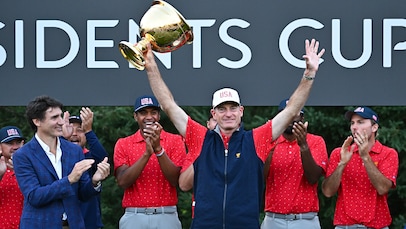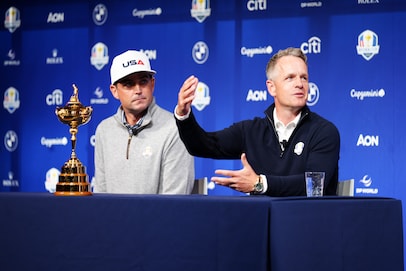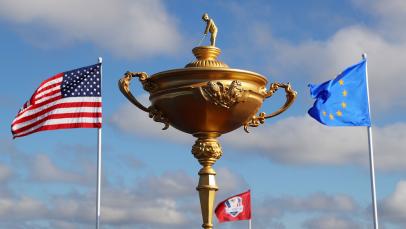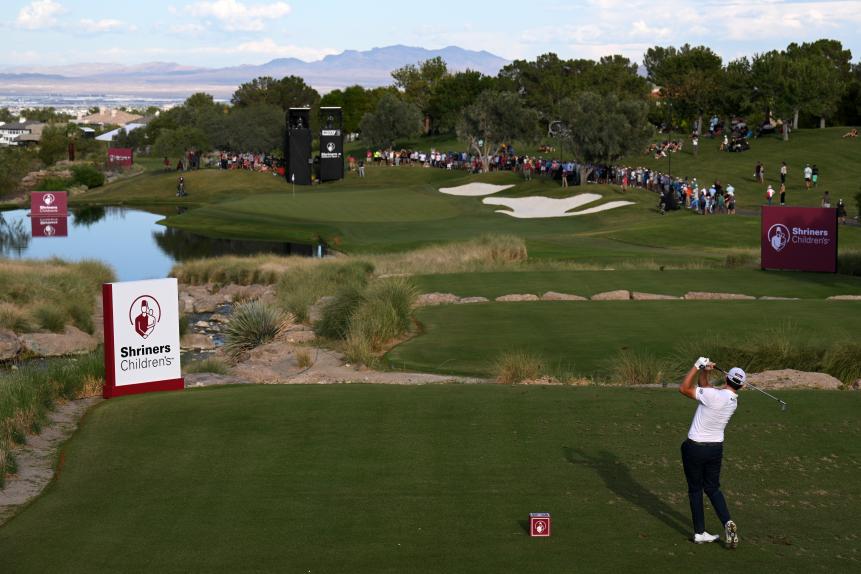The Ryder Cup ticket price controversy, explained – Australian Golf Digest

- by Admin
- October 15, 2024

Have the people been priced out of “The people’s country club?” That is the general worry on social media after ticket prices for next year’s Ryder Cup at Bethpage Black, revealed earlier this year, went viral. Golf Twitter can be a tough crowd, yet this wasn’t just a few amplified voices manufacturing a controversy, as the subject became one of the trending topics on both X and Google trends Monday. We do our best to sort the Ryder Cup mess out below.
Wait, what Ryder Cup controversy?
The uproar began when No Laying Up’s Kevin Van Valkenburg posted a screenshot of the daily badge prices for the 2025 Ryder Cup. He amplified it by writing: “I would like to go on the record now and say that if Europe wins the Ryder Cup at Bethpage because the crowds were turned into a polite snooze fest like LACC by the insane ticket prices, it’s going to go down as a massive own goal.” That would be a nod to the infamous turnout at last year’s U.S. Open, where tight confines and a persnickety Los Angeles Country Club membership limited the allotment of general admission tickets to fans, leading to one of the quieter galleries in recent major history. But this time it’s not topography or a club keeping the public out, but potentially the cost. Entry for one of the event’s three days of competition starts at $750 per person, with practice days tagged at $255.
Hold on … that’s the cheapest ticket?
Correct. It does come with unlimited food and non-alcoholic-drink vouchers, although we suppose you’d have to be Joey Chestnut to see savings on the food end of the deal.
😬
(H/T: @KVanValkenburg) pic.twitter.com/itzZtepw33
— Golf Digest (@GolfDigest) October 15, 2024
That, uh, seems high?
Also correct. Using last year’s Ryder Cup as context, general admission tickets into Marco Simone Golf and Country Club in Italy were between €50 ($52.97) and €60 ($63.56) for the practice days, €250 ($264.83) for Friday and Saturday tickets and €260 ($275.42) for Sunday. Yes, New York is a big market, but it’s not like Rome is a particularly small town.
How does that compare with other golf events?
It’s on the expensive end of the spectrum. Masters badges—inarguably the gold standard for golf tournament experiences in the United States—cost $140 per tournament day and $100 for practice rounds. The USGA is charging $60 to $85 for practice-round tickets at next year’s U.S. Open at Oakmont, with general admission on tournament days ranging from $150 to $200. Last year’s Open Championship at Royal Troon averaged around €100 for tournament days. As for the PGA Championship (which, like the Ryder Cup, is run by the PGA of America), next year’s tickets for tournament days clock in at $219, although that does include food and drink.
More From Golf Digest Presidents Cup 2024 Captain Jim Furyk reveals the ‘dog’ strategy he used in America’s Presidents Cup win  Ryder Cup Sergio Garcia (back in?), Phil Mickelson (definitely out) and 4 other things we learned from the Ryder Cup captains’ press conference
Ryder Cup Sergio Garcia (back in?), Phil Mickelson (definitely out) and 4 other things we learned from the Ryder Cup captains’ press conference  Fast Forward A way too early look at who makes the 2025 U.S. Ryder Cup team Hasn’t the PGA of America been accused of price gouging before?
Fast Forward A way too early look at who makes the 2025 U.S. Ryder Cup team Hasn’t the PGA of America been accused of price gouging before?
Yes, very recently in fact. During the 2022 PGA Championship at Southern Hills, there was “Beergate.” For those of you with lives, “Beergate” started when a photo of the concession prices at the Tulsa course went viral. Those prices included $15 for a Kona Golden Ale, $18 for Michelob Ultra and $19 for Stella Artois. Wine was a steal for $13, but a seltzer or cocktail ran you $19. Even Justin Thomas, who went on to win the championship, ripped the price gouge, with the PGA of America brass defending the charges, citing them as comparable to what you’d see at a stadium or arena. Although, as one who lives outside New York City, these aren’t exactly Yankee Stadium or Madison Square Garden prices as much as the type of dollar signs you’d expect to see at a trendy bar located on the moon.
This will only reignite the Ryder Cup’s player-payment debate, won’t it?
Absolutely. It was just last year that reports surfaced that American players questioned whether there should be payment for participation in the event (currently, players don’t receive money for competing but each is given $200,000 to donate to charities of their choosing). In the wake of Xander Schauffele reportedly being threatened with dismissal from the U.S. team over issues with the player benefit agreement, his father Stefan Schauffele said the topic of payment for players was worth having a “meaningful conversation about.” Considering major golf events are run by a free workforce of volunteers and the changing landscape of name, image and likeness usage in American sports, the 2025 ticket prices will only give more fodder to critics that the PGA of America may need to start sharing the massive amounts of profit its make from the biennial match.
What has been the response about the ticket prices?
Not great, to put it lightly. It’s not so much the money as what it represents. The optics of charging that type of coin at Bethpage, one of the rare municipal golf facilities in the U.S. that has a championship-level course, seemingly goes against the very egalitarian ethos of why Bethpage matters. Then there is the backdrop of the past three years of civil war, greed and self-interest in the professional game, a schism that has made many fans feel forgotten as golf’s central actors appear to care more about themselves than where their actions are taking the sport. The Ryder Cup prices, then, could be construed as another dis to the common fan. Throw in the fact the Ryder Cup is supposed to be the ONE event that’s not about money … yeah, people aren’t thrilled.
What’s the defense?
So far, the PGA of America has not commented about the prices since the debate became heated. If we had to make an argument (and to be clear, it’s not one we’re taking a side on), there is demand for an event that only comes to this country three days every four years. Yes, the Ryder Cup is expensive compared to other golf tournaments, but against other premier spectacles—say, the Super Bowl or a Taylor Swift concert—the prices are about in-line with the market. Of course, the Super Bowl drew 130 million audience last year compared to the Ryder Cup’s 3.4 million, so maybe not the best comparison.
Anything else?
Only that we long for simpler times where a man not wearing a hat constituted a controversy.
This article was originally published on golfdigest.com
The Latest News
-
October 16, 2024Nick Kyrgios says what chance he has of being in the main draw at the 2025 Australian Open
-
October 16, 2024Ashes 2025-26 Schedule Announced: Here are the Australia vs England series venues and dates
-
October 16, 2024Football Australia Appoint Jon Moss as new Head of Referees
-
October 16, 2024Schedule for Ashes 2025-26 revealed, Perth to host series opener from November 21
-
October 16, 2024Ashes 2025-26 schedule: Cricket Australia announce dates for series with England





